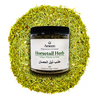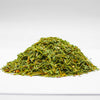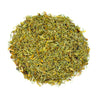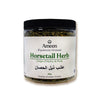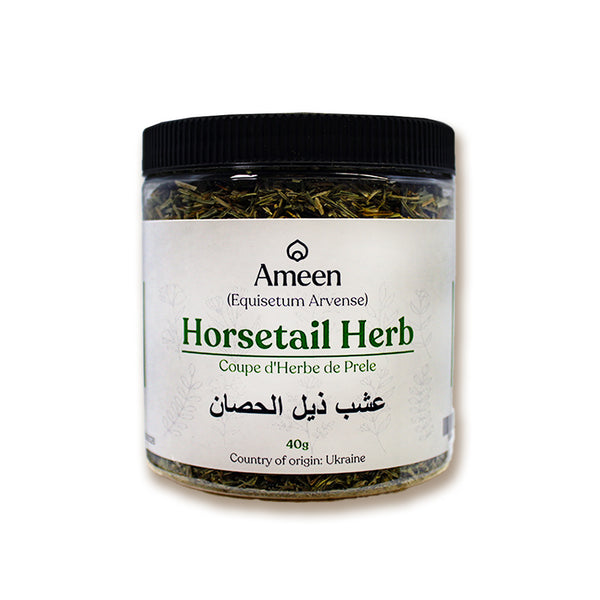Horsetail, scientifically known as Equisetum arvense, is a time-honored botanical celebrated for its unique structure and wide range of traditional applications. Recognizable by its slender, segmented stems and tail-like appearance, this ancient plant has existed for over 100 million years—making it one of nature’s most enduring herbs.
Native to temperate regions of the Northern Hemisphere, horsetail has long been used in herbal traditions and continues to be embraced for its versatility. In its dried form, the herb retains its characteristic earthy aroma and mild, slightly bitter taste, making it a fitting addition to wellness routines and tea blends.
Culinary and Herbal Applications
-
Herbal Teas: When steeped, dried horsetail releases a mild, refreshing infusion, often enjoyed as a soothing daily beverage.
-
Infusions and Decoctions: Ideal for combining with other botanicals in wellness brews or traditional herbal mixtures.
-
Topical Preparations: Due to its naturally high silica content, horsetail is often included in homemade hair rinses, skin soaks, and compresses.
Why Choose Horsetail Herb?
-
Distinct Appearance: Known for its jointed, tail-like structure reminiscent of bamboo or reeds.
-
Flavor Profile: Mildly earthy and subtly bitter—ideal for herbal teas and blends.
-
Versatile Usage: Popular in both internal and external preparations across traditional herbal practices.
Botanical and Cultural Identity
-
Botanical Name: Equisetum arvense
-
Common Names: Common Horsetail, Field Horsetail, Mare’s Tail, Snake Grass, Shavegrass, Jointed Rush, Puzzlegrass
-
Global Names:
-
Arabic: ذيل الحصان
-
Persian: دم اسب صحرایی
-
French: Prêle des champs, Queue de cheval
-
German: Zinnkraut, Schachtelhalm
-
Japanese: 杉菜 (Sugina)
-
Spanish: Cola de caballo
-
Russian: Хвощ полевой
-
Note: Horsetail should be stored in a cool, dry place in an airtight container to maintain freshness.

